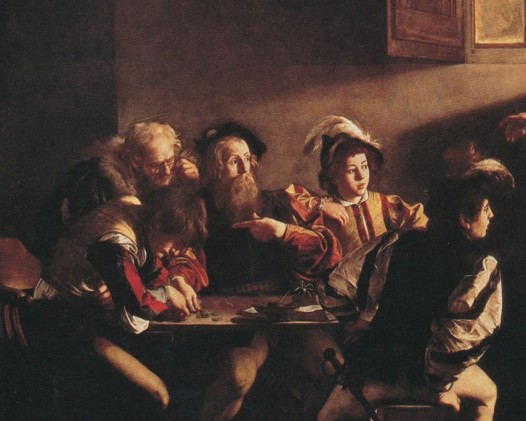How Mirror Neurons Transform Art into Embodied Experience
When we observe a work by Caravaggio, such as Narcissus or The Calling of Saint Matthew, our brain is not a passive spectator: it becomes an active participant. Within just 200 milliseconds, motor areas are engaged as if we ourselves were performing the depicted gestures—grasping, lifting, experiencing pain. This phenomenon is mediated by mirror neurons, brain cells discovered in 1996 by Giacomo Rizzolatti and his team at the University of Parma.
TECH RESERCH AND INNOVATION
Charlotte Madeleine CASTELLI
10/4/20252 min read


When we stand before a Caravaggio painting, such as Narcissus, The Calling of Saint Matthew, or The Deposition, we are not mere observers: our brain engages in a profound dialogue with the image. Within a remarkably brief interval of about 200 milliseconds, the motor areas of our brain activate as if we ourselves were performing the depicted gestures—grasping, lifting, suffering. This phenomenon is mediated by mirror neurons, specialized brain cells discovered in 1996 by Giacomo Rizzolatti and his research group at the University of Parma.
Mirror neurons are brain cells that activate both when we perform an action and when we observe someone else performing it. This discovery revolutionized our understanding of empathy, imitation-based learning, and the perception of others’ emotions. Studies have shown that observing actions—even partially obscured ones—activates the same brain regions involved in executing the action itself, enabling immediate and intuitive comprehension of the underlying intention .
Caravaggio’s works, with their intense emotionality and realism, appear to be specifically designed to stimulate mirror neurons. When we observe a painting depicting a hand reaching for an object, our motor regions activate as if we ourselves were grasping that object. Neuroimaging studies have demonstrated that observing figurative artworks engages the same brain areas involved in executing the depicted actions, suggesting that art exists not only in the eyes of the beholder but also in the body, in the neurons—a centuries-old dialogue between observer and work that transforms vision into lived experience.
This dynamic between viewer and artwork carries significant implications. It not only enriches aesthetic experience but also has potential therapeutic applications. Art is increasingly employed in neurorehabilitation protocols to stimulate brain plasticity and improve motor function in patients with disabilities. Moreover, understanding how art activates mirror neurons can inform curators and artists in designing exhibitions that foster deeper, more engaging connections with the audience.
The discovery of mirror neurons has opened new perspectives in understanding the interaction between brain and art. When we observe a Caravaggio painting, we are not passive spectators: we become participants, experiencing the actions represented. This phenomenon underscores the importance of art not only as an aesthetic expression but also as a medium for understanding and living human emotions. In essence, Caravaggio’s works are not merely visual masterpieces; they are immersive experiences that activate our brains in extraordinary ways. Through mirror neurons, art becomes a bridge between artist and viewer, enabling a profound and immediate connection.
© Charlotte Madeleine Castelli | All rights reserved